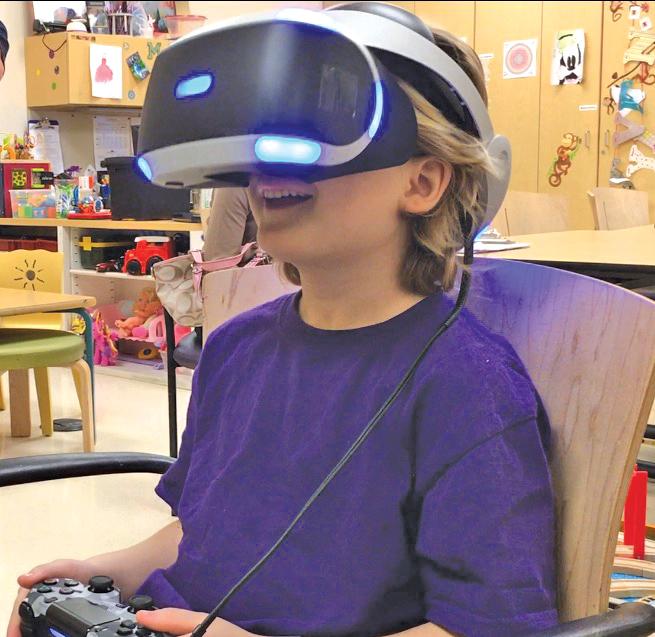While most high-tech gadgetry at Mott is for medical care, five-year-old Brinley Jungnitsch (pronounced YOU-nich) is experiencing virtual reality though a Sony PlayStation video game player and headset. The young patient from Saginaw pulls her chin downward to swoop under bridges along the River Seine and tilts her head sideways to fly past Notre Dame Cathedral and other Paris landmarks, thanks to an app called Eagle Flight.
“I tried flying through the Paris thing,” Brinley reports at one point during her flight, referring to the Eiffel Tower.
Brinley and other young patients are visiting virtual worlds through the efforts of patient technology coordinator J.J. Bouchard and staff from GameStart, an Ann Arbor school that teaches kids how to write computer code. GameStart staffers like Mike Kundrat work their way through lists of patients–about ten on any given day–who’ve expressed interest in strapping on a virtual reality headset to fly like an eagle, ride a roller coaster, or experience other activities–or in learning to write code for their own video games.
Kundrat explains that GameStart has created game templates that patients as young as six can fill in to personalize the program, using Microsoft’s C# coding language. GameStart volunteers also teach patients how to use the Pixel art app to create characters and add them to off-the-shelf video games.
While writing code can keep a hospitalized child busy, there can be some sneaky learning going on at the same time. Kundrat explains that 90 percent of coding is solving problems. It is very exact, and requires attention to detail.
“If you’re easily frustrated, you’ll have a hard time,” Kundrat says. “A good mindset is someone who enjoys solving puzzles and figuring things out.”
Bouchard says about 70 percent of patients who sign up for GameStart visits just want to strap on a headset and enter a different reality. Ten percent opt just to write code, and about 20 percent choose both.
Recently Bouchard used a $50,000 donation from the Jim Harbaugh Youth Fund to buy 500 virtual reality viewers, which are being offered to every incoming Mott patient. They pair with patient families’ own smartphones and VR apps to let kids mingle with dinosaurs, visit the Big House, and more.


